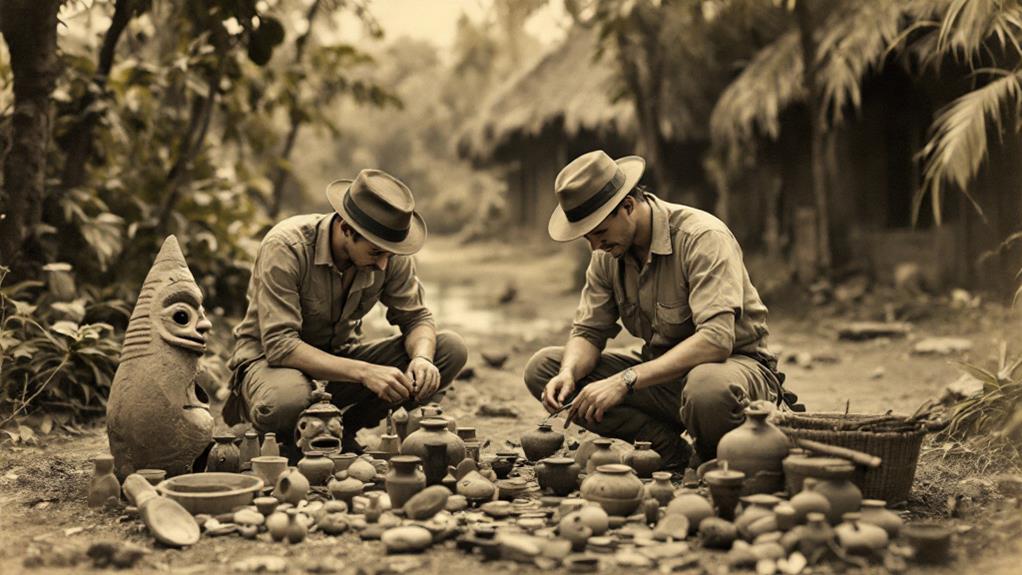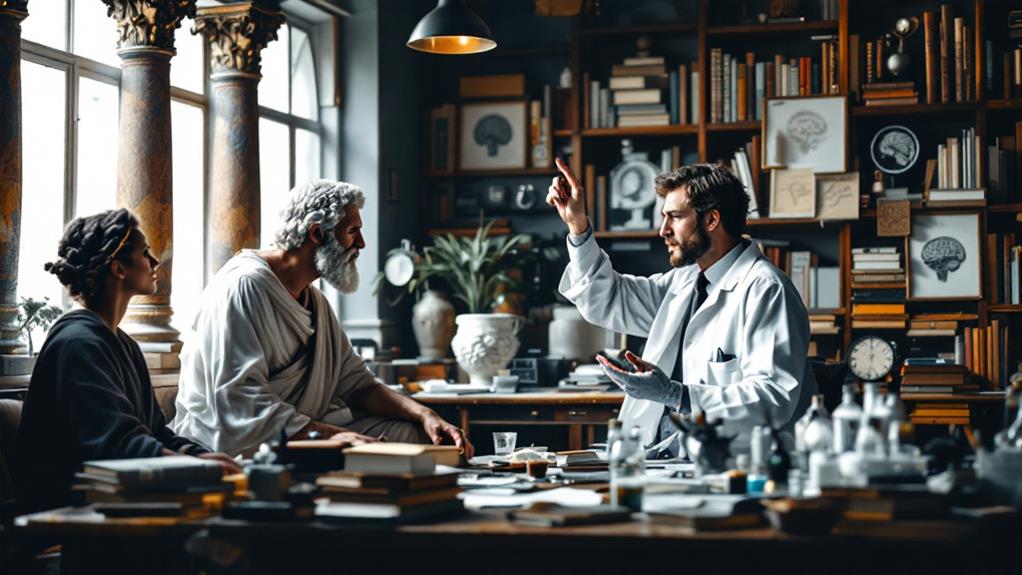The History of Robotics: From Early Concepts to Modern Machines
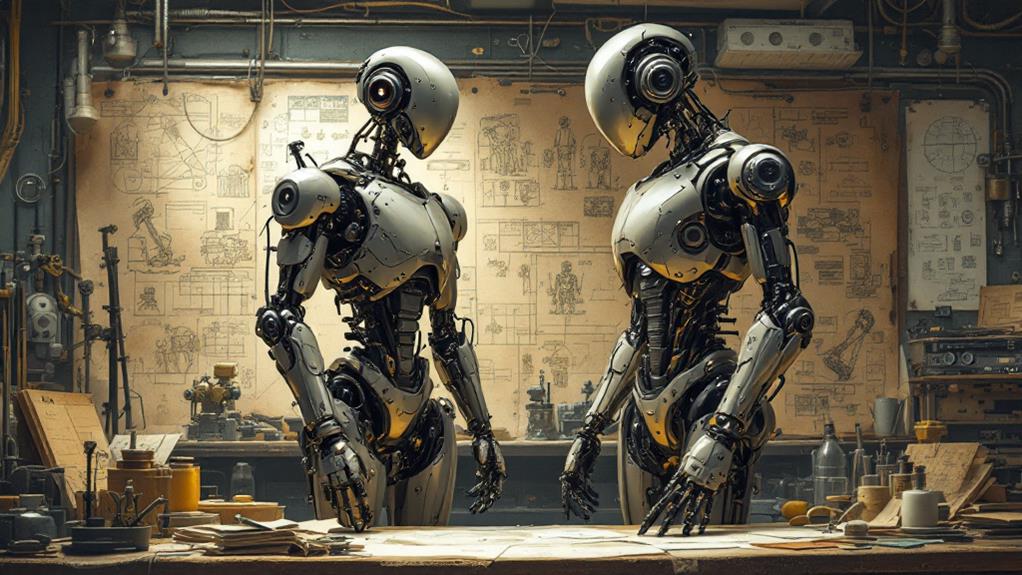
The history of robotics spans thousands of years, from ancient Greek myths to modern AI-driven machines. You'll find its roots in philosophical musings about automated tools and mechanical devices used in religious ceremonies. During the Renaissance, clockwork automatons entertained nobility, while the Industrial Age saw practical innovations like Jacquard's loom. Modern robotics emerged in the mid-20th century with Unimate, the first industrial robot. Since then, advancements in AI and computing have led to sophisticated robots used in manufacturing, healthcare, and homes. Today's robots are more adaptable and capable of independent decision-making. The future holds exciting possibilities and challenges as robotics continues to reshape society.
Ancient Automatons and Philosophical Foundations
The roots of robotics stretch back further than you might think. Ancient civilizations were enthralled by the idea of creating artificial beings, as evidenced in ancient Greek myths like Hephaestus's golden assistants and Talos, the bronze guardian of Crete. These tales reflect early human fascination with automated entities and their potential applications.
You'll find that ancient Egyptians also contributed to early robotic concepts. They developed mechanical devices for religious ceremonies and timekeeping, including water clocks with moving figures. These innovations laid the groundwork for more complex automatons in later centuries.
Philosophers played a pivotal role in shaping robotic thought. Aristotle contemplated the idea of automated tools replacing human labor, while Descartes investigated the concept of the human body as a machine. These philosophical foundations would influence future roboticists and their approach to creating artificial beings.
As you delve deeper into robotics history, you'll uncover that these ancient concepts and philosophical musings set the stage for the technological advancements that followed. They paved the way for the mechanical marvels of the Renaissance and the industrial revolution, ultimately leading to the sophisticated robots we are familiar with today.
Renaissance and Industrial Age Innovations
Building on the ancient foundations, Renaissance inventors brought mechanical marvels to life. You'd find clockwork automatons entertaining nobility in royal courts, while Leonardo da Vinci sketched designs for humanoid robots. These mechanical contraptions paved the way for more practical applications during the Industrial Revolution.
As factories emerged, early industrial machines began to convert manufacturing. You'd see:
- Jacquard's programmable loom (1804)
- Babbage's difference engine (1822)
- Tesla's remote-controlled boat (1898)
- Unimate, the first industrial robot (1961)
These innovations laid the groundwork for modern robotics. You'd notice a shift from purely entertainment-driven creations to machines designed for practical tasks. The Industrial Age saw the development of steam-powered engines and intricate mechanisms that could perform repetitive actions with precision.
Birth of Modern Robotics
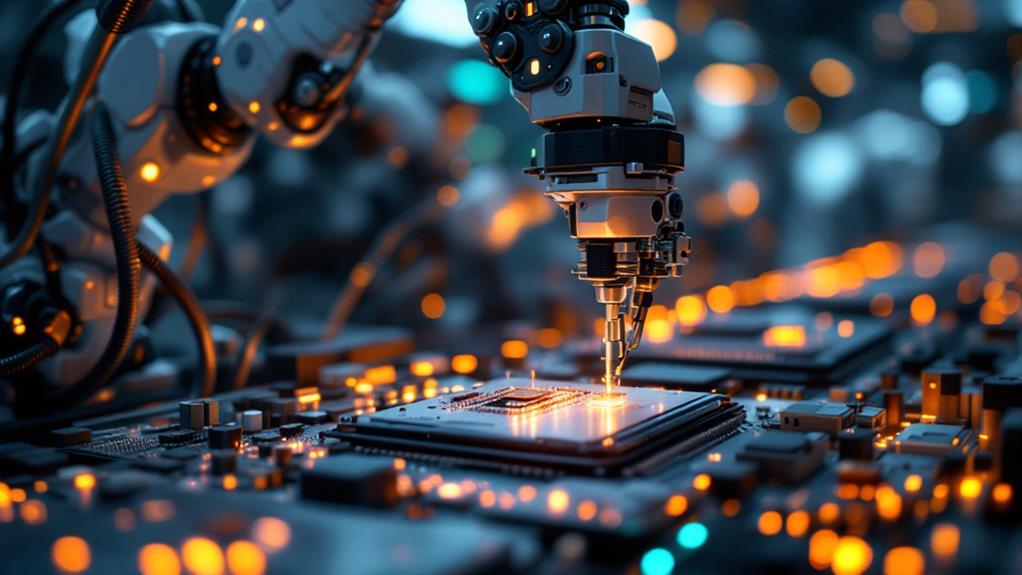
Sparks of innovation ignited the birth of modern robotics in the mid-20th century. You'll find that early pioneers like George Devol and Joseph Engelberger laid the foundation for industrial robotics. In 1954, Devol patented the first programmable robot, which led to the creation of Unimate, the world's first industrial robot, in 1961.
As you investigate this era, you'll uncover groundbreaking innovations that shaped the field. The Stanford Arm, developed in 1969, introduced computer-controlled movement, while the MIT Silver Arm in 1974 showcased advanced tactile sensing. These advancements paved the way for more sophisticated robots in manufacturing and research.
In the 1980s, you'll see robotics expand beyond industrial applications. The emergence of personal computers fueled progress in artificial intelligence and machine learning. Robots began to incorporate sensors, cameras, and more advanced programming, enabling them to interact with their environment in increasingly complex ways. This period also saw the rise of educational robotics kits, inspiring a new generation of engineers and programmers to expand the capabilities of robots.
Advancements in AI and Computing
Over the course of the late 20th and early 21st centuries, advancements in AI and computing have dramatically altered robotics. You've witnessed rapid progress in machine learning, neural network designs, and algorithmic breakthroughs that have revolutionized how robots perceive and interact with their environment.
These advancements have led to exceptional improvements in robotic capabilities:
- Enhanced sensory processing: Robots can now interpret complex visual, auditory, and tactile data with unparalleled accuracy.
- Improved decision-making: AI-powered robots can make split-second decisions based on vast amounts of data and complex algorithms.
- Natural language processing: Robots can understand and respond to human speech, making human-robot interaction more intuitive.
- Adaptive learning: Modern robots can learn from experience and adjust their behavior accordingly.
You'll find that these developments have expanded the potential applications of robotics across various industries. From manufacturing and healthcare to space exploration and domestic assistance, AI-driven robots are becoming increasingly prevalent in your daily life. As computing power continues to grow and AI algorithms become more sophisticated, you can expect even more innovative advancements in robotics in the years to come.
Contemporary Applications and Future Prospects
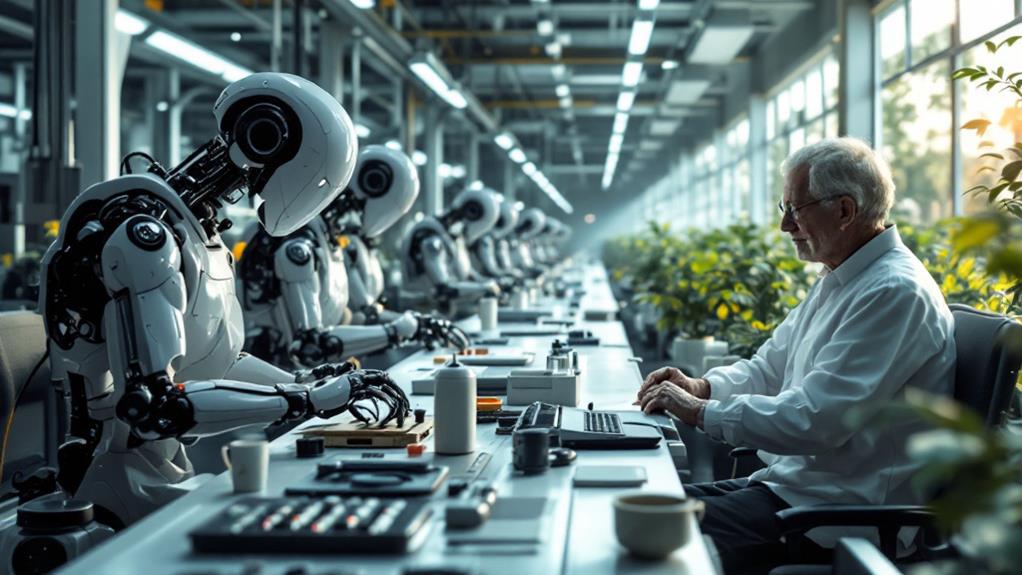
Today, robotics has penetrated numerous aspects of our lives, with applications spanning across diverse industries. You'll find robots in manufacturing, healthcare, agriculture, and even your home. They're assembling cars, assisting in surgeries, tending crops, and vacuuming floors. As technology advances, you'll see robots taking on more complex tasks and collaborating with humans in ways you might not have imagined.
The field of collaborative robotics is rapidly expanding, with robots designed to work alongside humans safely and efficiently. These "cobots" are equipped with sensors and programmed to respond to human presence, adhering to evolving safety standards. You'll encounter them in warehouses, factories, and research labs, enhancing productivity and reducing workplace injuries.
Looking ahead, you can expect robotics to revolutionize transportation, elder care, and space exploration. Self-driving vehicles, robotic caregivers, and autonomous space probes are just a few examples of what's on the horizon. As artificial intelligence continues to improve, you'll witness robots becoming more adaptable, learning from their environments, and making decisions independently. The future of robotics promises to reshape society, presenting both exciting opportunities and challenges for you to explore.
